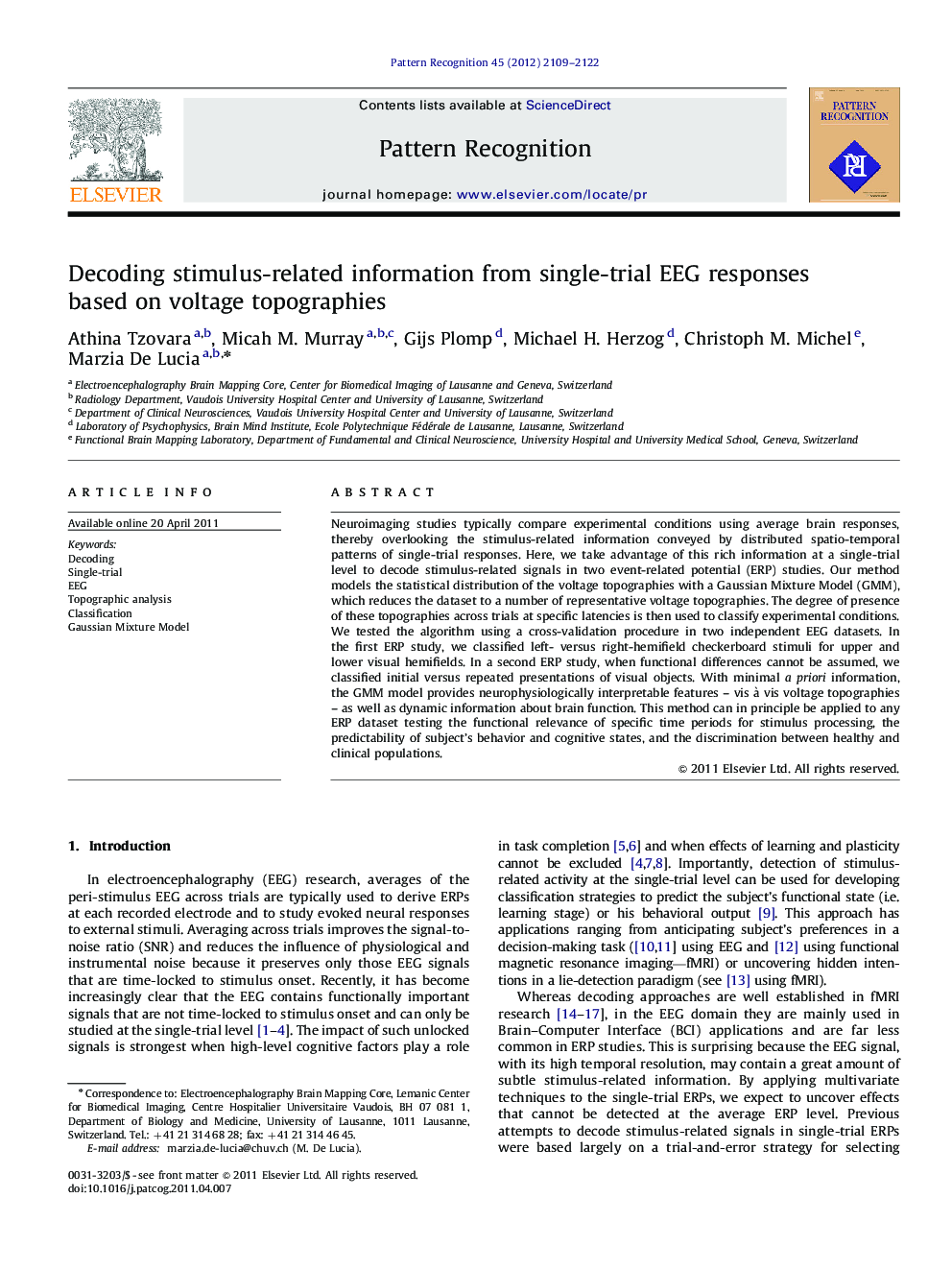| Article ID | Journal | Published Year | Pages | File Type |
|---|---|---|---|---|
| 530294 | Pattern Recognition | 2012 | 14 Pages |
Neuroimaging studies typically compare experimental conditions using average brain responses, thereby overlooking the stimulus-related information conveyed by distributed spatio-temporal patterns of single-trial responses. Here, we take advantage of this rich information at a single-trial level to decode stimulus-related signals in two event-related potential (ERP) studies. Our method models the statistical distribution of the voltage topographies with a Gaussian Mixture Model (GMM), which reduces the dataset to a number of representative voltage topographies. The degree of presence of these topographies across trials at specific latencies is then used to classify experimental conditions. We tested the algorithm using a cross-validation procedure in two independent EEG datasets. In the first ERP study, we classified left- versus right-hemifield checkerboard stimuli for upper and lower visual hemifields. In a second ERP study, when functional differences cannot be assumed, we classified initial versus repeated presentations of visual objects. With minimal a priori information, the GMM model provides neurophysiologically interpretable features – vis à vis voltage topographies – as well as dynamic information about brain function. This method can in principle be applied to any ERP dataset testing the functional relevance of specific time periods for stimulus processing, the predictability of subject's behavior and cognitive states, and the discrimination between healthy and clinical populations.
► We classify single event-related potentials based on voltage topographies. ► Extracted features – voltage topographies – are neurophysiologically interpretable. ► We can test the functional relevance of specific latencies for stimulus processing.
